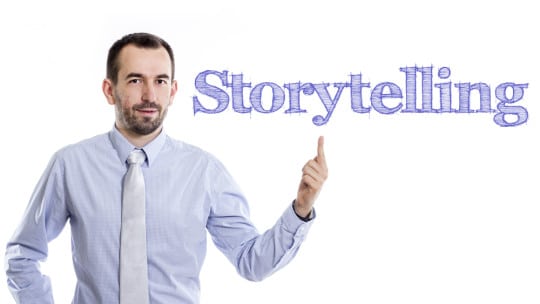
How does one become a next-generation CCO? Answering that question is the idea behind The New CCO Podcast, a series of conversations between CCOs from the Arthur W. Page Society. An advance copy of the series’ first podcast was made available to PRNews Pro.


How Starbucks goes about telling stories and listening socially are two of the areas that are explored in some depth on the initial podcast, as Starbucks CCO Corey duBrowa deftly weaves in stories to explain to host Stacey Tank the roots of the coffee brand’s Upstanders series. Tank is CCO of The Home Depot and recently contributed an article to PRNews Pro (PRNP, Jan. 23).
We’d like to report the genesis of the idea for Upstanders came from a communicator. Well, not exactly. That itself is quite a story, which is detailed during the early portion of the podcast.
As duBrowa tells it, Starbucks brass was on a nationwide tour to engage with partners (the Starbucks term for employees). A partner stepped to the microphone and said, “[CEO] Howard [Schultz], you talk all the time about how we should not be bystanders. Why wouldn’t we be upstanders?” That was it. The hairs on “the backs of our necks stood up…we knew she had just touched a nerve,” duBrowa says on the podcast. The brand’s SVP, public affairs, Rajiv Chandrasekaran, a former journalist, had been gathering stories of ordinary people doing extraordinary things in Starbucks’ communities. After hearing that comment from the partner, he and duBrowa looked at each other. “It all started from there,” duBrowa says.
At that point Chandrasekaran went out and dug into the stories even deeper. Each was, as duBrowa says, a “great example of citizenship.” How did Starbucks decide to move ahead with this experiment in social media? In 2016 the mood of the country was “dark…the presidential campaign had been contentious” and Howard felt “the civility of the country was sort of up for grabs…so we thought…what a great way for us to talk about our belief in what a for-profit company can do to contribute to society, not just to shareholders.” In addition, the stories were also local, and were likely to resonate with communities and humanize the brand.
From there Starbucks wondered about distribution strategies. It was Schultz who asked how the brand could engage customers as they waited for their coffee after ordering it on the Starbucks app. Besides having the Upstanders content online, it was decided to put it on the Starbucks app. “You have a built-in audience of 65 million people a week coming into your store…even if you get a fractional share of those people the good you could do…the stories you could tell would be manifest.” The result was a series of short videos of about 10 citizens in Starbucks communities doing good; duBrowa calls them “mini NGOs” (non-governmental organizations).
DuBrowa is a wonderful storyteller, but Tank’s probing questions also help the podcast immensely. For example, she spurs duBrowa to admit that in 2010 “our toolset was woefully lacking, we had a newsroom, but the ability for that newsroom to really engage and to story-tell, to solicit input, and to do all the things that a modern corporate newsroom should do was woefully lacking.” This came into play when Starbucks decided to “respectfully request” that customers avoid bringing firearms into its stores. The brand was about to issue a letter to that effect—it wasn’t a ban, “we weren’t telling you what to do,” he says—and it knew there would be a lot of input coming from customers that it wanted to monitor. More than that, duBrowa wanted to get out of the rut of thinking whether or not “this a press release.” Suffice it to say, Starbucks upgraded its toolkit. More details are included during the 21-minute podcast.
Why They Return
Other interesting tidbits include duBrowa’s remarks about measurement. For example, the brand “knows” that for 70% of its customers, the major factor in the decision to return to a Starbucks is not the coffee or the décor of its stores, but, as duBrowa says, “the green-apron-wearing partner, it’s a person.”
It’s for that reason the brand measured whether or not the Upstanders series helped solidify relationships between customers and partners. Starbucks has heard “lots of anecdotal examples and data” that showed the series was successful on that score, he says.
Of course, it may be comforting for communicators to hear duBrow admit Starbucks lacks all the answers. For example, he says his brand and communicators generally are “still in a pretty wild-West environment in terms of what measurement of our craft really is.” On the other hand, the Upstanders thought experiment worked in that the individuals portrayed in the series found donations to their causes expanded greatly after its content went public. “So we were able to use our scale for some kind of good.” Interestingly, there was no Starbucks branding on the videos in the Upstanders series. “It’s like we’re taking the platform and turning it over to someone else…like handing the mic off to somebody with a great story and letting them roll.”
And Video…
A terrific question Tank asks duBrowa late in the podcast is what he’d do differently on Upstanders with an unlimited budget. He answers without hesitation, “We’d Facebook Live everything, everything. What we discovered was that the mainstream media we were deeply involved with…was Facebook Live-ing all the interviews [of Upstanders as we were doing them]…and the numbers were just off the charts.”
There’s also an interesting exchange between Tank and duBrowa about the skills and capabilities they think will be needed in the future. “I see a democratization of creativity,” Tank says, in that creativity used to be blocked and now it’s been freed. duBrowa turned the question into a discussion of the kind of staffer he’s seeking and the skills he’s trying to nurture internally. “I see Swiss Army knives, people who don’t have the religion of specialization anymore, they have the religion of engagement, of creativity, of ‘anybody can do this’…I’m interested in sort of cross-pollination…integration…in multiple sets of skills…triple-threat [people]…they are amazing storytellers, they can do something in the written word and have some visual capability, whether that’s photographs or video…and they understand the levers of distribution…I’ve always respected great storytellers…I want to give our storytellers a broader highway…how about four lanes, how about six lanes?”
Editor’s Notes: Access the podcast at: http://bit.ly/2lyrYSm This content appeared originally in PR News Pro, March 6, 2017. For subscription information, please visit: https://www.prnewsonline.com/about/info
CONTACT: [email protected]
